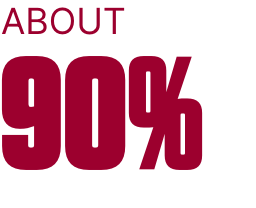The Goldfish principle:
Making sense of persuasive communication
By Susan Walkley, Managing Director, Havas Life Medicom PR and Comms team

Google tells us that the human attention span is only 8 seconds – one second less than a goldfish. Whether this is fact or click bait, it’s true that people “info snack” to filter out the periphery.
Today healthcare communication inhabits a fast-moving eco-system in which the volume of traffic has reached overload. Now that social media and digital have opened so many more opportunities to get our message across, it is more important than ever to create attention-grabbing and authentic connections – and not just add to the noise.
We believe that great communication is about people – not about goldfish. To mobilise your audience to your cause, or land compelling brand or corporate messaging, understanding what makes them tick is an important starting point on your journey of persuasion.
WHAT MAKES OUR BRAIN TICK
It’s a universal truth that people are complicated. Our motivations are not only governed by rational thought processes (System 2.01 brain) vying for control over our emotions (System 1.01 brain), but a myriad of other factors is at play.
These include peoples’:
cultural beliefs and social context
cognitive ability to fully understand, then act on information received
attitude to risk and loss aversion
unconscious biases that determine how we make sense of the world around us
DECISION MAKING IN HEALTHCARE
Put simply, human beings are irrational. This complexity deepens further in the context of healthcare, where decision-making has important consequences.
We see rational decision-making behaviour when HCPs make choices about treatments in chronic disease areas, where even small gains need to be weighed against potential losses.
In contrast, this “norm” is less present when people are under acute healthcare stress or there is a high perceived threat to survival – this is when our primal motivations take over.

CONFIRMATION BIAS
Favouring information that supports your existing beliefs and discounting evidence that does not conform.
Other cognitive biases include: Halo Effect: Self-Serving Bias: Misinformation Effect: Functional Fixedness: Anchoring Bias: False Consensus Effect
The good news is that behavioural scientists and human anthropologists have provided many valued shortcuts to help us make sense of the human psyche.
These shortcuts are vital components in any healthcare communicator’s storytelling armory.
GETTING YOUR MESSAGE ACROSS
When it comes to crafting communication, we must take care that our message will land in the way we expect it to. Understanding how our brain makes sense of incoming information can help shape an outgoing message that makes an impact.
SELECTIVE ATTENTION. Our ability to pay attention is usually limited to the beginning and the conclusion – what’s in the middle can be missed. Perhaps helpful for avoiding confrontation when delivering bad news, but to maintain interest we need to punctuate content with attention grabbing hooks.
EBBINHAUS’ FORGETTING CURVE. Our brains are not hard-wired to retain facts for very long. About 90% of what we learn is forgotten in a month – and the biggest drop occurs soon after learning. Using emotional stories triggers dopamine and helps people remember for longer.
COGNITIVE OVERLOAD. A symptom of our reality, too much information is a problem. Most people cannot actively retain more than 7 items at any one time and usually can spontaneously recall only 3, or at best, 4 items. The “rule of three” is a useful tool to simplify communication and focus on the priorities.
GAIN FRAMING: In healthcare the stakes can be high and the perception of risk can create biases and impact how people behave. It’s ok to highlight an issue as long as the ‘risk’ is resolved immediately and the “gain” from taking a course of action is framed in a positive way.


PROGRAMMING PERSUASIVE COMMUNICATIONS
Many factors come into play that influence the way people make decisions. Even just understanding the basics from behavioural science gives communicators useful pointers to craft storytelling strategies and plan outreach.
With 40+ PR thinkers, shapers and doers in the team, our in-house behavioural experts, scientists, writers, creatives, & film-makers work side by side with project multi-taskers.
Together we have created buzz across news media and dominated Google page 1, successfully fostered brand equity and corporate reputation, worked with advocacy opinion leaders, mobilised patient activation, and supported employee change management.

At Havas Life Medicom our CONTENT LAB combines persuasive storytelling with well-crafted creative, to offer new ways to deliver standout content across today’s multi-channels.


